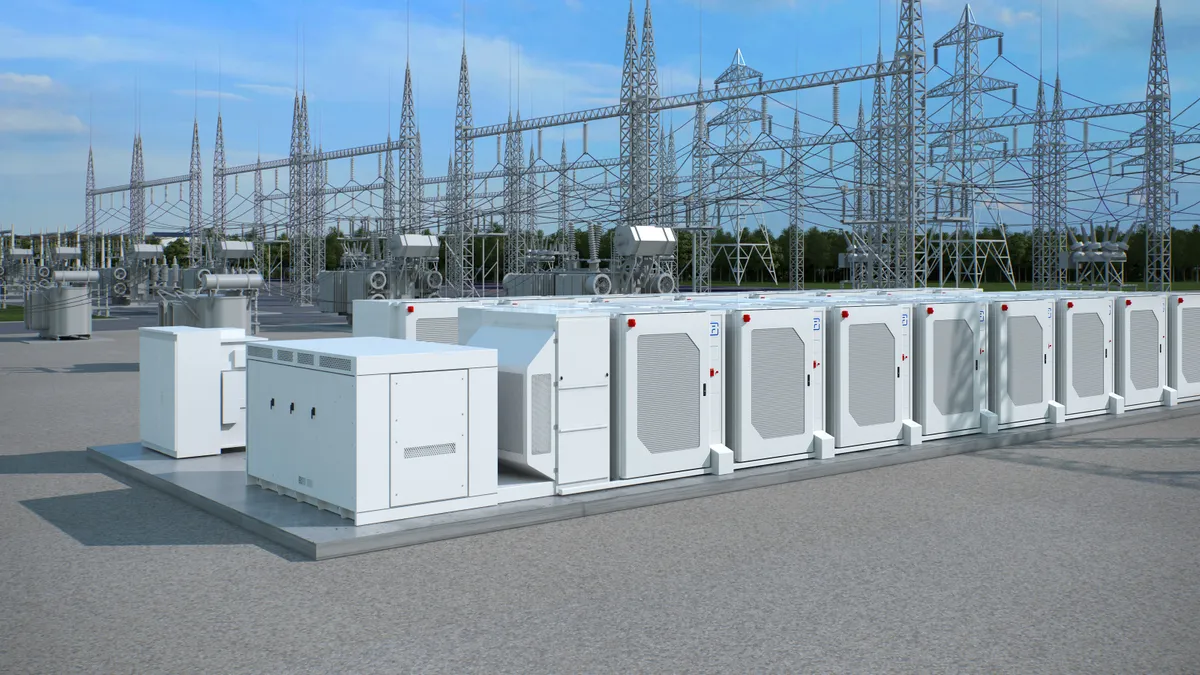Dive Brief:
-
AES Indiana on Wednesday asked state regulators for permission to build a 200-MW/800-MWh battery storage facility at a retiring coal-fired power plant.
-
Fluence Energy, an AES Indiana affiliate, has been selected to build the Pike County Energy Storage project, which would use interconnection rights from a generating unit at the Petersburg power plant, according to a filing at the Indiana Utility Regulatory Commission.
-
The utility expects the project will be eligible for a 40% federal investment tax credit for clean energy facilities built in “energy communities.” AES Indiana plans to bring the battery system online by Dec. 1, 2024.
Dive Insight:
The proposed battery storage project grew out of AES Indiana’s most recent integrated resource plan, which calls for converting two coal-fired units totaling 1,052 MW at its Petersburg power plant to natural gas in 2025.
The IRP also indicated that AES Indiana needs 240 MW of battery storage to fill a capacity shortfall in the winter of 2025. The shortfall is partly driven by the Midcontinent Independent System Operator’s shift to a seasonal capacity construct, according to the utility’s application.
The storage project on 26 acres at the power plant site will help to meet that shortfall with the lowest present value revenue requirement per MW compared to offers received in an all-source request for proposals, the Indianapolis-based utility said.
The ability to use the Petersburg plant’s injection rights lowers the risk of project delays because it won’t have to go through MISO’s interconnection study process and does not require a third-party transmission owner to complete the interconnection, G. Aaron Cooper, chief commercial officer for AES U.S. Utilities, said in testimony at the commission.
“As renewables proliferate, finding ideal interconnections is getting, and will continue to get, more difficult,” he said.
Using the existing interconnection likely lowers the project’s cost and avoids possible network upgrades, according to Cooper. The project’s estimated cost was redacted.
The Pike County Energy Storage project would increase the monthly bill of a residential customer using 1,000 kWh by about $1.13, or 1%, according to the utility.
If approved, the project will be owned by an AES Indiana subsidiary and tax equity partners, according to Cooper. The joint venture will allow AES Indiana to maximize the investment tax credit benefits. The utility will have the option of buying out the tax equity partners once they reach their internal rate of return, he said.
The AES Corp., AES Indiana’s parent company, has a roughly 34% stake in Fluence. The utility selected Fluence to build the project in a solicitation process.
AES Indiana asked the utility commission to approve the project within 120 days so it can be built before the winter of 2025 while taking advantage of favorable lithium pricing.
It is “very encouraging” to see battery storage selected as a significant part of AES Indiana's portfolio for replacing some of its retired coal generation, said Ben Inskeep, program director for Citizens Action Coalition, an Indiana consumer and environmental advocacy group that is active in utility resource planning processes.
The IRPs “have consistently demonstrated that there are significant cost savings of shifting our electricity generation from coal to renewable energy, energy efficiency, demand response, and battery storage,” he said.
CAC plans to carefully review the proposal, including the cost of the project and AES Indiana's selection of an affiliate as the winner of the RFP, he said.














